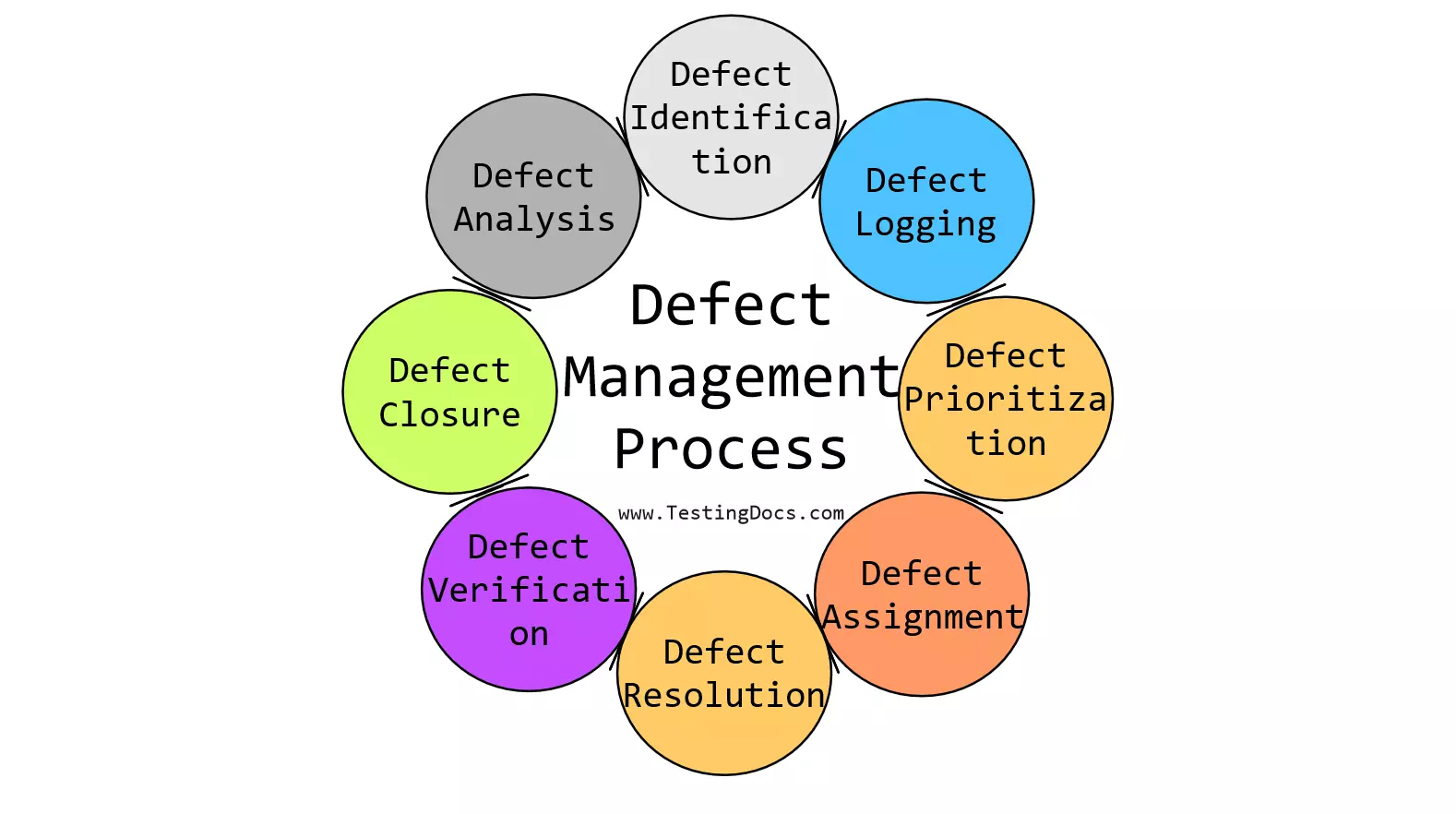Defect Management Process
Overview
There are several steps involved in the Defect management process. A defect management process is a set of activities that are performed to identify, report, track, and resolve defects in a software product.
Defect Management Process
The following are the key steps involved in the defect management process:
- Defect Identification
- Defect Logging
- Defect Prioritization
- Defect Assignment
- Defect Resolution
- Defect Verification
- Defect Closure
- Defect Analysis

Defect Identification
Defect Identification is the first step in the defect management process, where defects are identified by various means, such as reviewing code, conducting testing, or receiving feedback from end-users.
Defect Logging
Defect Logging is reporting the defect into a defect tracking system. Once a defect is identified, it needs to be logged into a defect tracking system/tool( also known as a bug tracking tool). The defect should be accurately described with details such as the nature of the defect, the steps to reproduce it, and the severity of the defect.

Defect Prioritization
After logging the defect, it needs to be prioritized based on its severity and impact on the software product. High-severity defects that impact critical functionalities should be given higher priority.
Defect Assignment
Once the defect is prioritized, it needs to be assigned to a developer or a team responsible for fixing the defect.
Defect Resolution
The assigned developer or team should investigate the defect and provide a fix for it. Once the fix is completed, it should be tested thoroughly to ensure that the defect is resolved.
Defect Verification
After the defect is fixed, it should be verified to ensure that the fix is effective and that the defect is completely resolved.
Defect Closure
If the defect is resolved successfully, it should be closed in the defect tracking system, and the software product can be released to production.
Defect Analysis
Defect Analysis is the final step in the defect management process. It is to analyze the root cause of the defect and identify measures to prevent similar defects from occurring in the future. This analysis can help improve the software development process and reduce the number of defects in future releases.





